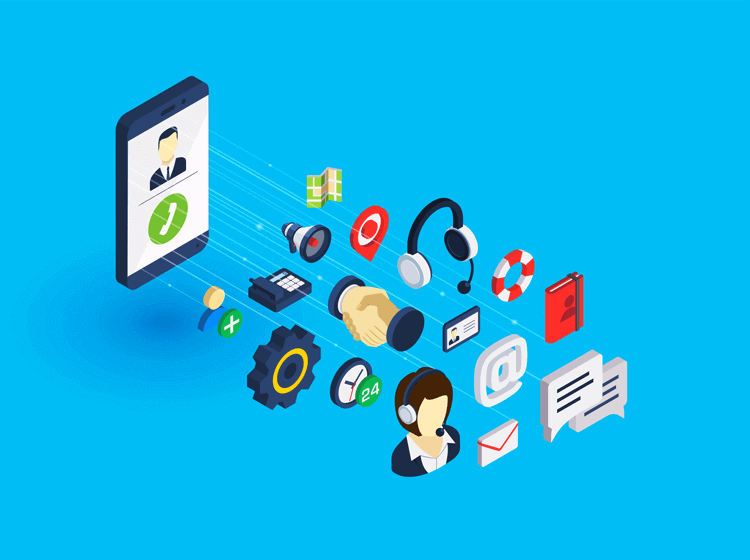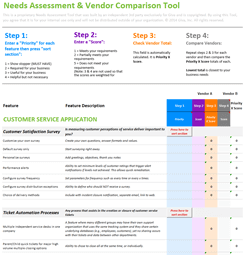Understanding the Call Center Service Level: A Detailed Guide
To understand a call center service level, think of fine-tuning a well-oiled machine. Every component, or metric, plays a vital role in ensuring the machine runs smoothly and efficiently. Just as a vehicle needs regular checks and balances, a call center requires constant monitoring and adjustment to maintain high service levels.
Let us dive into what makes a call center succeed with its key metrics, ensuring every customer interaction is consistent and handled with care.

What are Call Center Service Levels and Why They Matter
Service level in call centers is a critical benchmark that measures the effectiveness and efficiency of customer interactions. It encompasses metrics like response time, call resolution rate, and customer satisfaction scores. These levels are pivotal in gauging how well a call center meets customer expectations and maintains operational efficiency.
A high service level indicates a well-managed call center. For example:
- It reflects the ability to handle high call volumes with minimal wait times
- It effectively distributes calls among support agents
- It can help resolve customer issues promptly
This efficiency not only enhances customer experience but also optimizes agent workload. This leads to reduced burnout and improved staff morale.
Consistently achieving a high service level can also lead to better resource management. Call centers can use these metrics to forecast demand, schedule adequate staffing during peak hours, and allocate training resources where needed.
15 Key Call Center Service Level Metrics to Measure
-
First Call Resolution (FCR)
What is it? First Call Resolution measures the effectiveness of a call center in resolving customer issues during the first point of contact.
How is it achieved? It is calculated by dividing the number of calls resolved on the first contact by the total number of calls. The equation is laid out as follows: FCR = (Number of Resolved Cases / Total Number of Cases). You can multiply it by 100 to get a percentage. For example, if 225 calls out of 500 achieved first call resolution, your FCR rate is 45%.
Why is it important? According to Mailchimp, managing FCR effectively not only enhances customer satisfaction but also increases operational efficiency. To use an analogy: The quicker the customer service issues are resolved, the less time and resources are spent on follow-ups. This allows call center agents to focus on other important tasks.
Bonus! Manage your FCR with Giva's First Call Resolution tool.
-
Average Speed of Answer (ASA)
What is it? Average Speed of Answer is the average time taken by a call center to answer an incoming call.
How is it achieved? This metric reflects the responsiveness and efficiency of the customer service center. Whether that be endeavoring to pick up incoming calls by the second ring, or answering emails within 24-hours, there should be goals attached to each channel of communication.
Why is it important? ASA directly impacts customer satisfaction. Customers generally expect quick responses, and a longer wait time can lead to frustration and even cause them to abandon the call. It also demonstrates respect for a customer's time. In today's competitive business environment, customers are less likely to wait around and more likely to seek services elsewhere if their calls are not answered promptly.
-
Service Level Agreement (SLA) Adherence
What is it? SLA adherence measures how well a call center meets its agreed-upon service level targets with customers.
How is it achieved? This is achieved when a business keeps its promises to clients related to targets for response time, resolution time, and other key performance indicators.
Why is it important? Call Centre Helper explains that an SLA in a call center is beneficial for:
- Offering a big picture of the customer experience
- Setting clear expectations
- Improving customer experience and retention rates
-
Abandonment Rate
What is it? The abandonment rate in a call center measures the percentage of callers who hang up before reaching an agent.
How is it achieved? Simply put, long wait times are the key driver here. Extended wait times, especially related to phone conversations, can result in customers leaving the call queue.
Why is it important? It's a critical indicator of customer frustration, often resulting from long wait times or inadequate staffing. According to data collected by GetVoip, maintaining an abandoned call rate between 5% and 8% is considered the industry standard. Exceeding this range, especially reaching a rate of 10% or more, indicates significant issues that need addressing.
-
Customer Satisfaction (CSAT) Scores
What is it? CSAT scores are derived from customer feedback after service interactions. These scores reflect how satisfied customers are with the service they received.
How is it achieved? CSAT scores are usually collected via a customer survey sent through email after purchase or service. They can also occur over the phone after a call is completed.
Why is it important? According to information shared by AVOXI, real-time, personal interactions with customers have been shown to lead to significantly higher CSAT scores. This suggests that enhancing the quality of one-on-one interactions can substantially improve overall customer satisfaction.
-
Net Promoter Score (NPS)
What is it? NPS measures the likelihood of customers recommending a company's services to others.
How is it achieved? It's calculated based on customer responses to how likely they are to recommend the company on a scale from 0 to 10, usually via a survey.
Why is it important? Research by Bain & Company indicates that on average, companies with higher NPS scores have greater than two times the growth rate of their competitors. This can also assist with customer retention and repeat buyers.
-
Occupancy Rate
What is it? Occupancy rate in call centers measures the time agents spend on calls and doing related work versus their total available time.
How is it achieved? This can be achieved in a variety of ways, whether an organization wants employees to track this time themselves, or leave it to management. It is best to have an open and collective discussion with the team to decide what is the best way to track and manage time.
Why is it important? It provides insights into whether a call center is overstaffed or understaffed. It can also gauge if agents are using their time efficiently. An excessively high rate may indicate a risk of agent burnout, emphasizing the need for balanced workloads and scheduled breaks to maintain staff mental health and performance.
-
Quality Assurance (QA) Scores
What is it? QA scores evaluate the quality of agent interactions, considering factors like adherence to protocols, communication skills, and problem-solving abilities.
How is it achieved? Customers can judge their experience via a customer satisfaction (CSAT) score survey, as mentioned above. However, there should also be internal systems in place for management to monitor employee performance. QA scores involve assessing and scoring calls or interactions based on a set of criteria, as mentioned above. Most customer service calls are recorded, so management can listen live, or do playback sessions for review.
Why is it important? Quality assurance is vital for ensuring consistent customer service that aligns with the brand's standards. It helps in setting clear goals and values, thereby improving agent performance and customer experience. An effective QA process fosters a culture of quality within the call center. This helps ensure employees are motivated and customers are more likely to return due to satisfactory service.
-
Agent Schedule Adherence
What is it? This metric assesses how closely agents stick to their assigned work schedules, including their availability for taking calls.
How is it achieved? By implementing some of the efficiency tactics mentioned thus far, agents can tighten up the time it takes to resolve a customer issue, freeing up time to work on other projects they may have. Creating a daily or weekly agenda, with allocations of time away from customer correspondence, can be a critical step.
Why is it important? Adherence to a set schedule can have positive impacts on an employee's work-life balance, morale and the prevention of burnout. For the customer, it can mean agents that are more readily available to assist (ex: not everyone is going on lunch break at the same time).
-
Forecast Accuracy
What is it? Forecast accuracy in call centers involves predicting future call volumes and staffing requirements to ensure efficient operations.
How is it achieved? Businesses can forecast required resources first by analyzing historical call data. They can also consider external factors, like in-market promotions or upcoming product launches. By tapping into these metrics, a business can make precise predictions of future call volumes and trends for optimal resource allocation.
Why is it important? This is one of the most important components for a business to consider when building an efficient customer service operation. Properly forecasting demand can avoid issues like understaffing, and longer wait times for customers. Similarly, overstaffing can be a waste of resources for an organization. Trying to find the sweet spot in this instance can keep customers happy and corporate resources in check.
-
Escalation Rate
What is it? Escalation rate in call centers measures the proportion of customer service requests that are transferred to higher levels of support. This includes transferring calls to more experienced staff or seeking additional support to resolve complex issues.
How is it achieved? Efficiently managing escalation rate involves understanding the factors that lead to escalations in the first place, such as:
- The complexity of customer inquiries
- The skill level of the first agent
- The overall availability of resources
By routing inquiries appropriately, businesses can resolve more issues at the initial contact level.
Why is it important? Customers do not want to be passed from agent to agent, department to department. This is a huge pain point. Customers want their issues resolved as early on in the process as possible, ideally at the first point of contact. Businesses should be tracking their escalation rates and making amendments to customer routing, as necessary. For example, let us imagine that you are a telecommunications company. There is an issue with internet modems that requires a technical walk-through for reset. Anyone with these inquiries should be automatically passed to Level 2 support — there is no purpose for the primary point of contact to attempt initial troubleshooting for known issues beyond their skillset.
-
Percentage of Blocked Calls
What is it? The percentage of blocked calls in a call center refers to the proportion of incoming calls that cannot be connected or handled immediately due to call center resource limitations, such as all agents being busy or technical issues in the call handling system. It is an indicator of the call center's capacity to handle peak call volumes.
How is it achieved? Like other items we have explored, minimizing blocked calls comes down to optimizing resource allocation. This includes:
- Ensuring adequate staffing during peak hours
- Efficient call routing
- Maintaining a robust telephony infrastructure
Implementing a callback option or digital channels, like social media support, can alleviate pressure on voice channels.
Why is it important? According to The KPI Institute, while there is no set standard most call centers aim for no more than 2% of inbound telephone calls to be blocked. If a customer is calling, they feel that their situation is of high importance. Therefore, a call rejection message without an alternate option, like a callback, can be cause for major frustration.
-
Availability of Multichannel Support
What is it? Multichannel support in call centers refers to the capability of providing assistance through various communication channels such as phone, chat, email, and social media. This approach caters to the diverse preferences of customers, allowing them to choose their preferred method of interaction.
How is it achieved? Achieving effective multichannel support involves integrating various communication platforms into a unified system. Think of a platform like Hootsuite, which allows teams to post, monitor and reply to social inquiries. This integration allows for consistent and efficient customer service across all channels. AI-powered chatbots can further enhance the multichannel support experience.
Why is it important? Multichannel support is crucial for modern call centers due to changing customer expectations. According to a Conversocial study, 54% of customers prefer social messaging channels over traditional methods like phone or email.
-
Cost per Contact
What is it? This metric measures the total expense involved in handling each customer interaction. This includes direct costs like labor and technology, as well as indirect costs such as overhead. Understanding this metric helps in evaluating the financial efficiency of call center operations.
How is it achieved? To manage cost per contact, call centers focus on resource allocation and utilizing cost-effective service delivery strategies. This can involve:
- Streamlining processes
- Leveraging technology such as automated systems
- Training agents to handle interactions more efficiently
Regularly monitoring and analyzing this metric allows for adjustments and improvements along the way.
Why is it important? Maintaining a low cost per contact is vital for the financial health of call centers. It directly impacts the bottom line and influences the overall budget for customer service operations. Effective management of this cost ensures that resources are being used responsibly, while perhaps leaving a surplus for service enhancements.
-
Employee Satisfaction (ESAT)
What is it? ESAT in call centers refers to the degree to which agents feel content and motivated in their work environment. This metric gauges the overall morale, job satisfaction, and engagement levels of employees.
How is it achieved? Boosting ESAT involves:
- Creating a positive and supportive work environment
- Providing adequate training and growth opportunities
- Recognizing and rewarding employee achievements
Regular feedback, effective communication, and ensuring a healthy work-life balance are key strategies. Call centers also use surveys and feedback tools to measure and understand employee satisfaction levels on a regular basis.
Why is it important? The satisfaction of call center agents directly impacts the quality of customer service. Happy and engaged employees can be more engaged with their work, resulting in less agent attrition and better customer service for your clients.
The Bottom Line: Mastering Call Center Service Level Excellence
We've explored various strategies for achieving service excellence in call centers. A common theme is the balance between efficiency and customer satisfaction.
As you aim to surpass these benchmarks, consider leveraging Giva's Customer Service Software in the Cloud. It's an ideal choice for businesses seeking to enhance their service levels.
Our staff performance video offers insights into how this software can help in analyzing and improving critical metrics like first call resolution, average speed of answer, and escalation rate.





